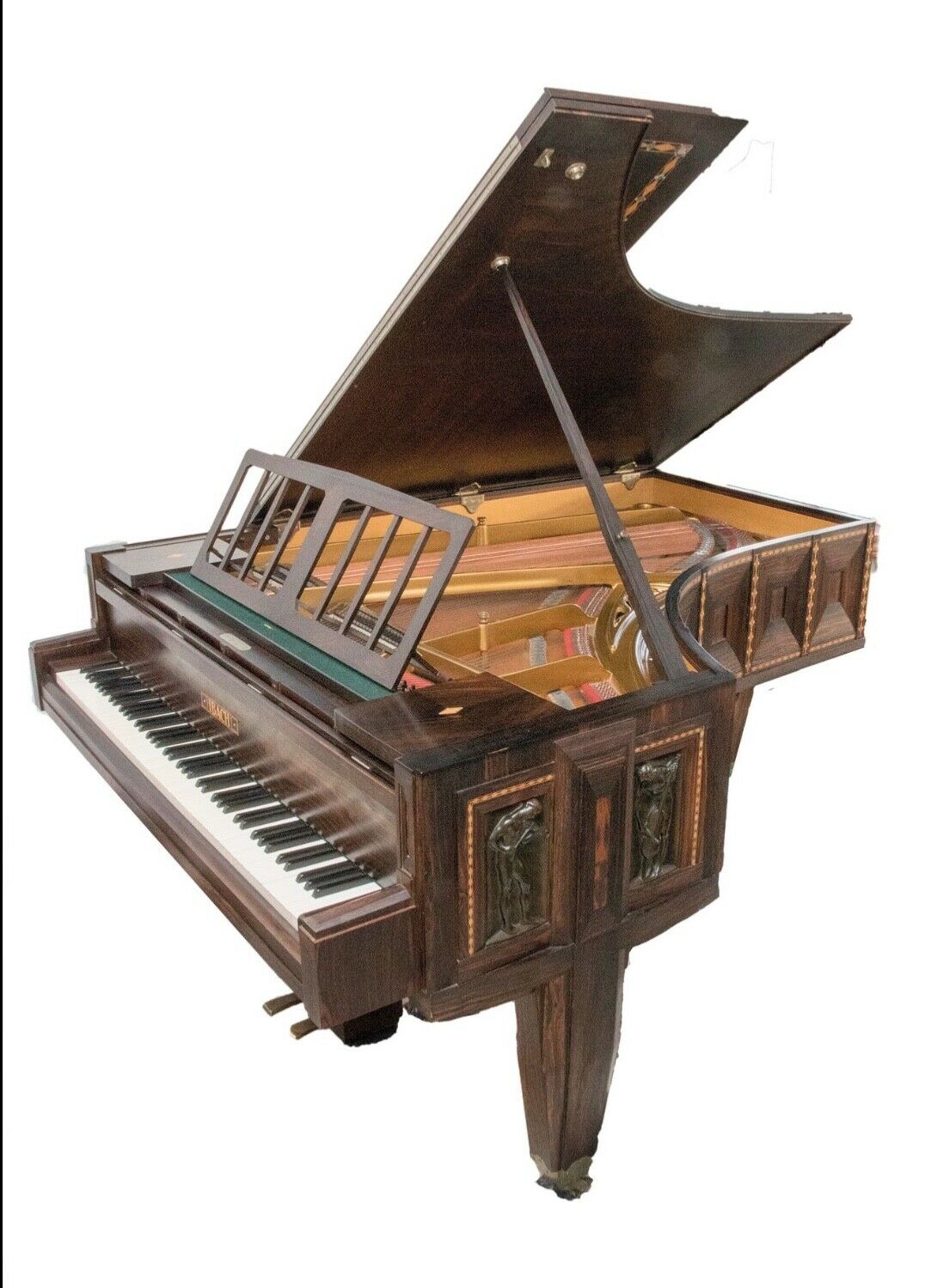-40%
Jugendstil Salonflügel/ Grand Piano, Antik von 1908, Mathildenhöhe Exponat
€ 42240
- Description
- Size Guide
Description
Jugendstil Salonflügel/ Grand Piano, Ibach von 1908 , Mathildenhöhen Exponat von Architekt Emil BeutingerA.
The Jugendstil Grand Piano is a unique piece of art that stands as testimony to a significant
period in German and European history. The piano was designed in 1908 by famous Art
Nouveau architect Emil Beutinger and built by Ibach, one the oldest piano manufactures in
the world, using only the finest materials. The instrument was commissioned by the Grand
Duke of Hessen bei Rhein, head of what was then a sovereign regional principality.
Following Germany’s First World War defeat and the abdication of Kaiser Wilhelm II in
1918, the Grand Duke’s principality became part of the Weimar Republic.
The piano was displayed at the Mathildenhöhe in Darmstadt as part of one of four expositions
for Free and Applied Art held between 1901 and 1914, at what was considered the centre of
the German Art Nouveau movement, the Jugendstil, under the artistic direction of Peter
Behrens, Walter Gropius and Le Corbusier. Beutinger had by that point become a very well-
known architect of the Art Nouveau style, and was specifically cited by Walter Gropius in his
famous essay about Art Nouveau in 1911 as the man who typified the essence of Jugendstil
aesthetics in architecture. Beutinger had strong connections with the German Jugendstil
movement and its associated artists, and was also a member of the German Werkbund, as
well as the director of the Wiesbaden Art Academy.
The Jugendstil Grand Piano should perhaps be characterized as a work of mini-architecture.
It’s much more than a mere instrument, it’s a piano encased in art. Where most grand pianos
have curved lines, the architectural roots of this piano are delineated by the angular and
linear style of its design, which is typical of German Art Nouveau. But despite this, the
instrument still sounds as grand and powerful as it should. A piano with the same angular
design was used by the wife of the renowned artist Franz Stuck at their home, the Villa Stuck
in Munich.
But Beutinger has done more with this piano: he built a frame around it consisting of panels,
giving the impression of windows through which the observer can look into the instrument.
He allowed his colleague and friend, the famous Jugendstil sculptor Adolph Amberg, whose
art collections are also on display in museums in Berlin and Stockholm, to inscribe bronze
sculptures into the wood with Greek-antique style motifs showing a range of different
musicians (see close-up photos).
What’s more, Beutinger included a political message in his work, a message that explains
why the Grand Duke never took possession of this unique piece. He designed a pyramid-
shaped inlay dominated by a star on the wood of the piano’s lid. The shape represented a
symbol of Freemasonry that sent a clear message which was of course refuted by the nobility,
who were still in power at that time.
Emil Beutinger bought the grand piano himself when the 1908 exposition ended, and it
remained in the family’s possession until 2014, when it was purchased by an international
opera singer. Through two world wars this extraordinary collector’s item remained intact and
perfectly preserved. The instrument still meets the exacting criteria of a modern concert
grand piano.
Not only should we revisit Emil Beutinger’s artistic oeuvre, we should also consider other
aspects of his life. A free spirit, he seemed to live outside his time. He was elected honorary
mayor (Oberbürgomeister) of the city of Heilbronn in 1923 as an independent candidate, but
immediately after the election of Adolf Hitler in 1933 he was banished by the Nazis, and only
managed to save himself from persecution by leaping from the window of the Town Hall and
escaping. After World War II, the American occupation forces recalled him and asked him to
help reconstruct his hometown. Looking back to the symbolised form and content of his
Jugendstil Grand Piano, we can see that while the German Kaiserreich under Wilhelm II was
characterised by nationalism, militarism and megalomania, Beutinger’s creation can be seen
as an appeal for modesty and self-restraint, as well as the silent protest of a better Germany,
an appeal that went unheard at the dawn of the First World War.
B.
Gutachten / Expertise:
Mr. Wolfgang Vornehm,
Klavierbauer, München , vom 7.7.2017
Licensed Builder of Pianos, Munich, from 7.7.2017
C.
Komplettes Dossier mit mehr Fotos via Dropbox Link
Complete Dossier with more photos via Dropbox Link
D.
Aktueller Standort des Flügels: Berlin
Actual location of the Grand Piano : Berlin, Germany




















